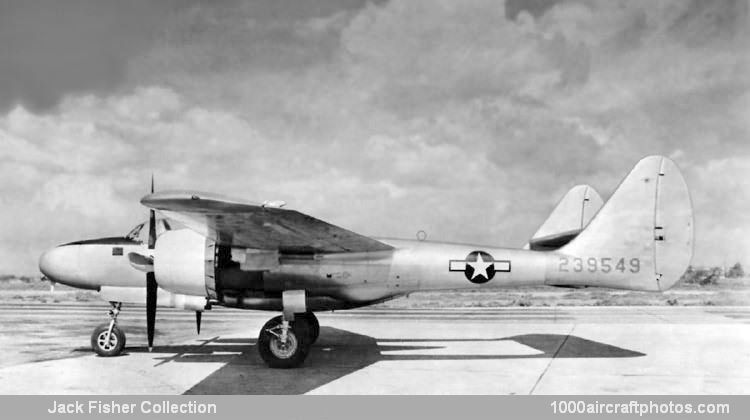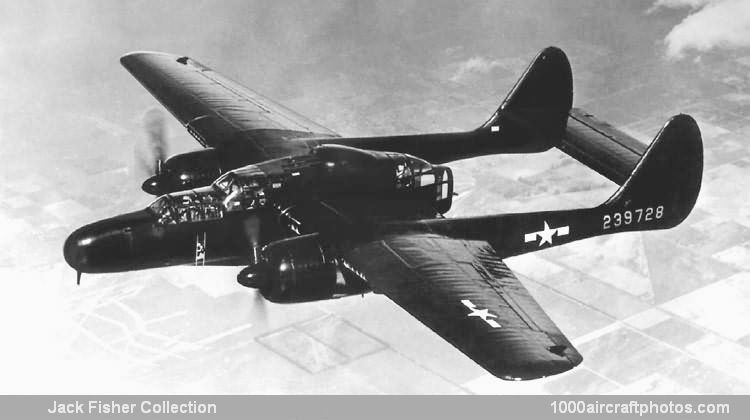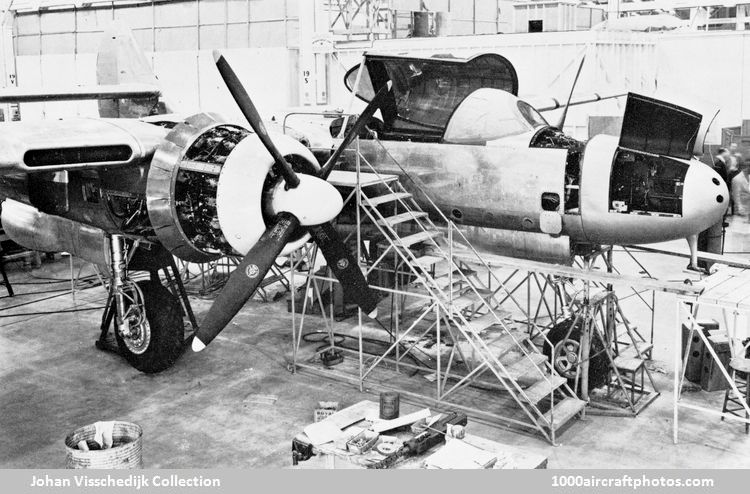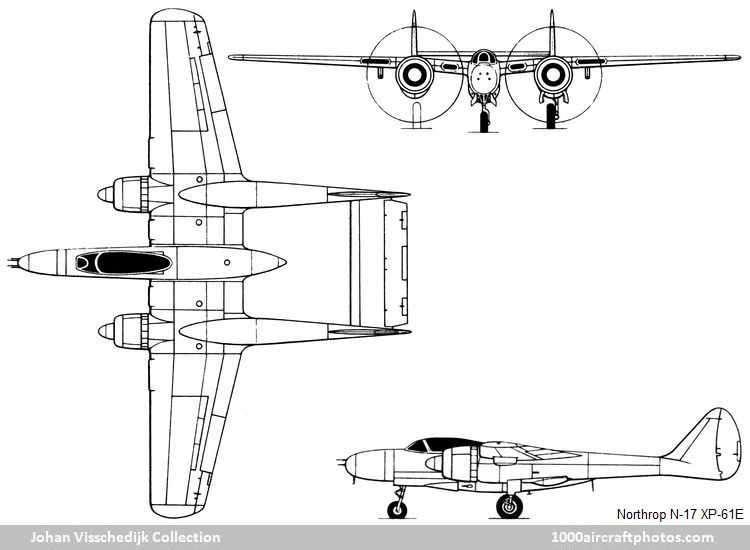06/07/2021. Remarks by
Johan Visschedijk: "In an effort to evolve a high-performance, long-range escort fighter, two P-61B Black Widow airframes (s/n 42-39549, 42-39557 c/n 1068, 1076) were selected for modification as
XP-61Es in early 1944. However, by that time the North American P-51D Mustang arrived in the European war theatre in quantity and proved to be a very adequate escort fighter, hence the
XP-61E two-seat day fighter project got a lower priority, and it was not before March 1945 the first prototype flew.
Northrop N-8 P-61B Black Widow (
Jack Fisher Collection)
Retaining the 2,250 hp R-2800-65 Double Wasp eighteen-cylinder air-cooled radial engines of the earlier sub-type, the XP-61E central fuselage nacelle was completely revised. The third seat in the rear of the night-fighter Black Widow was eliminated and the decking of the fuselage nacelle was cut down flush with the wing. The two crew were seated in tandem under a single-piece blown canopy, which was hinging to the left on the first prototype, while the second prototype had an aft-sliding canopy. The center and aft sections of the fuselage nacelle accommodated additional fuel tankage, bringing the total internal fuel load up to 1,158 gal (4,384 l). While the ventral battery of four 0.787 in (20 mm) cannon was retained, the nose-mounted AI radar was supplanted by four 0.50 in (12.7 mm) guns, mounted in a box arrangement on the first prototype, whereas those in the second aircraft were mounted side-by-side.
XP-61E in final stage of construction (
Johan Visschedijk Collection)
On April 11, 1945, the second prototype was wrecked when the landing gear was prematurely retracted during a high-performance take off. The aircraft sank onto and slid along the runway. The pilot escaped injuries, the aircraft was written off.
With a maximum speed of 376 mph at 17,000 ft (605 kmh at 5,182 m), the XP-61E proved to have significant performance advantage over the earlier P-61 versions, but was beaten by the latest fighters then entering service. That, and the end of WW II, ended the XP-61E project. However, the first prototype was subsequently converted to the XF-15 photo-reconnaissance aircraft prototype, it was withdrawn from use on September 18, 1947, and went to the scrapyard on April 29, 1948."




